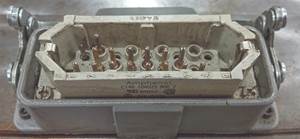Transition to In-House Welding
Bringing laser welding in-house can help mold shops reduce shipping and handling costs while improving mold quality, lead time and overall customer service.
Laser welding is used by mold shops for a variety of maintenance and repair applications. Its benefits include minimal heat-affected zone (HAZ), which keeps the base material more stable and closer to its original state; little to no weld sink; less material buildup; no hard spots; process cleanliness; the ability to weld very small, intricate pieces without workpiece damage; the ability to weld difficult-to-reach areas; and a high degree of control for pinpoint accuracy with minimal excess weld.
The costs associated with outsourcing laser welding can add up, however. Mold builders who transition to in-house welding can reduce shipping and handling costs while improving quality, lead time and overall customer service. To bring laser welding in-house, consider the following steps:
Cost/benefit analysis. Start by creating a list of every laser job the shop has outsourced during the past two years, and include the cost and time required to complete each job. This infor-mation can provide a baseline for calculating a return on investment (ROI) for each laser weld-ing system you might consider.
Information gathering. Review data on available laser welding systems, focusing on the initial purchase price, system capabilities, training investment, maintenance costs, proximity of nearest service center and customer testimonials. Invite suppliers of the top contenders to make presentations to the team responsible for making the final purchase decision.
Systems and service. Base your selection on the laser welding system’s ROI and overall value by comparing prices against each system’s capabilities. Also consider service, as your team will need training and post-purchase support to offer the best value to your own customers. Before your shop awards a purchase order for a system, speak with some of the supplier’s current customers who have the same system.
Training. Consider training individuals who have no experience in conventional welding. Laser welding is vastly different from other types of welding, so it may be wise to avoid staffing a new department with welders holding onto old habits. Also, to fully leverage this investment, ensure that your welders gain a good understanding of the welding system’s capabilities and a working knowledge of different welding strategies.
Practice. Create an environment that allows your welders to take time each day to experiment with the new system on a variety of weld types. Increase the difficulty level as their training advances. As the welders become more comfortable with the basics, consider more on-site training to ensure growth in their level of expertise and confidence for handling more difficult situations.
For example, deep-holes, tight areas and thin walls pose special challenges that require the welder to carefully control the process. If the beam is not focused properly, the intensity will not be at the appropriate level to produce a quality weld. If the beam is too intense, it will create a blasting effect, yielding rough, inconsistent welds, or even burning all the way through a thin wall. If it’s too weak, there will not be enough heat to produce a strong weld. Practice will also help the welder better differentiate between the various “sounds” welding produces at different intensity levels. This differentiation serves as another method for determining if a weld is “out of focus.”
Fixtures. Determine the appropriate fixture for each welding application. For example, a rotating chuck can weld outer diameters of cylindrical parts or magnetic fixtures and provide quick and easy workpiece manipulation when positioning.
Related Content
Hands-on Workshop Teaches Mold Maintenance Process
Intensive workshop teaches the process of mold maintenance to help put an end to the firefighting culture of many toolrooms.
Read MorePortable Low-Heat, Non-Arcing Resistance Welder for Mold Repair
Rocklin’s user-friendly MoldMender Micro Welder delivers simple and cost-effective localized repair in-house with precision and versatility, enhancing mold and die durability and reducing disassembly and downtime.
Read MoreProducts and Services for Multiple Moldmaking Needs
New year, new technology roundup! Featured here is a collection of product offerings, from profile milling cutters to industry-specific CAD/CAM software to innovative hot work tool steels.
Read MoreHow to Maintain Heaters, Thermocouples, Valve Gates and Controls
An examination of real-world problems and solutions involving hot runner system maintenance.
Read MoreRead Next
Are You a Moldmaker Considering 3D Printing? Consider the 3D Printing Workshop at NPE2024
Presentations will cover 3D printing for mold tooling, material innovation, product development, bridge production and full-scale, high-volume additive manufacturing.
Read MoreReasons to Use Fiber Lasers for Mold Cleaning
Fiber lasers offer a simplicity, speed, control and portability, minimizing mold cleaning risks.
Read MoreHow to Use Continuing Education to Remain Competitive in Moldmaking
Continued training helps moldmakers make tooling decisions and properly use the latest cutting tool to efficiently machine high-quality molds.
Read More









_300x250 4.png;maxWidth=300;quality=90)
.png;maxWidth=300;quality=90)














